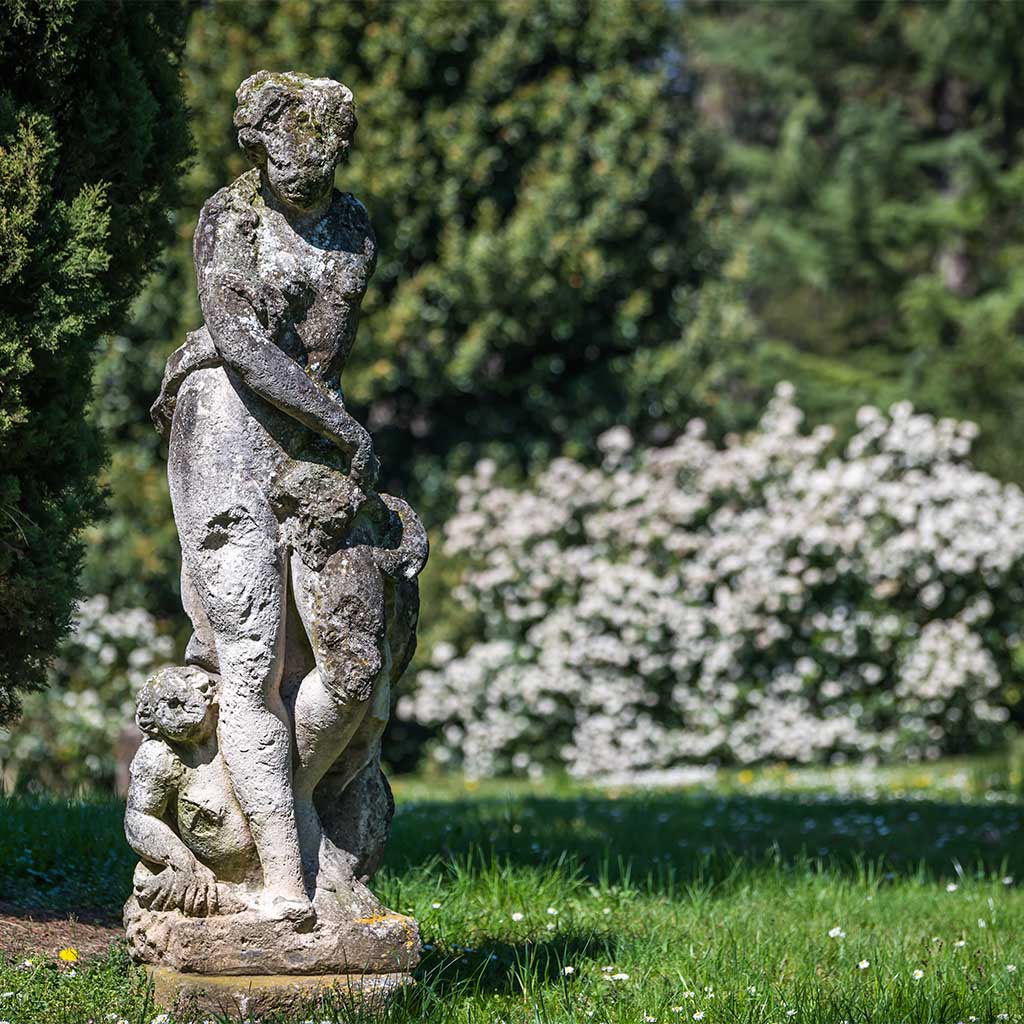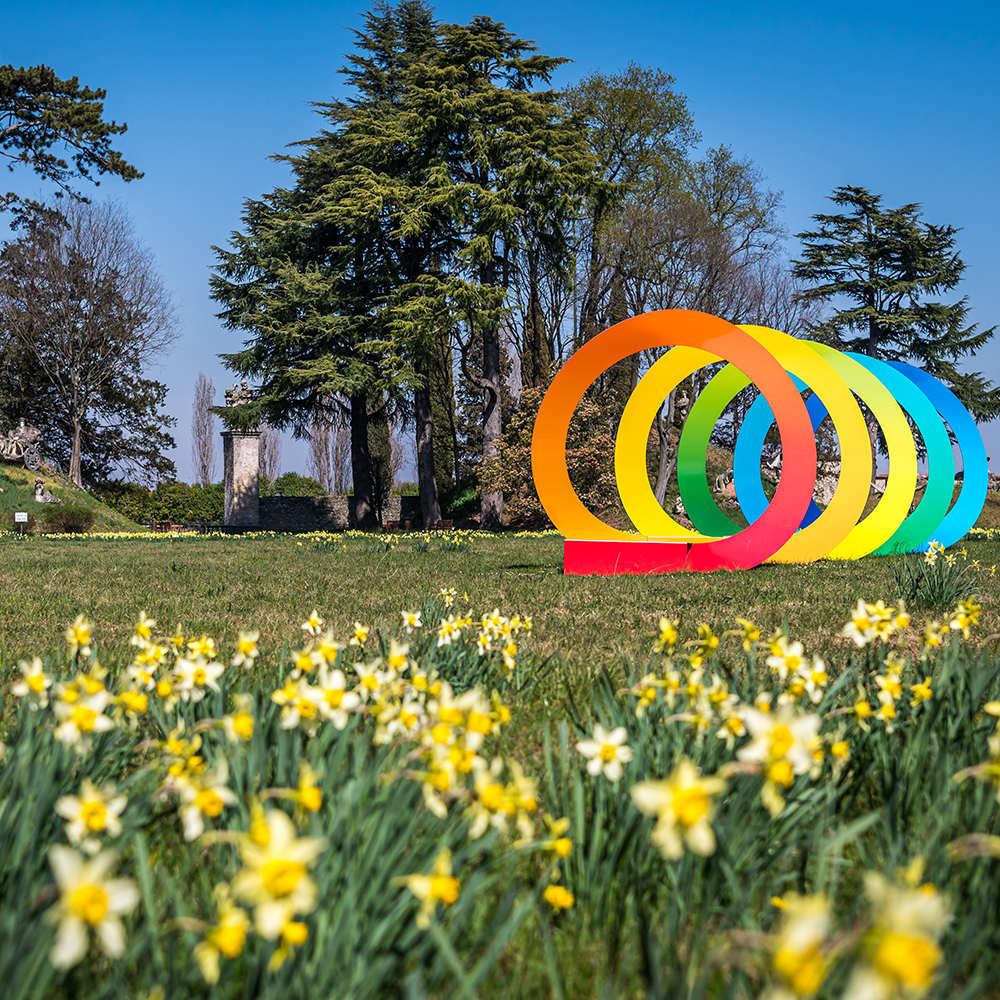The garden
The history of the park
Owned by the noble Manin family, Venetian counts of Tuscan origin, from the mid-sixteenth century the estates of Passariano became the backdrop for the magnificence of one of the richest families in Europe, determined to rival the most prestigious European courts.
After the first sketches by Francesco IV Manin (1670), with influences from Vincenzo Scamozzi and Baldassare Longhena, in the Baroque era the park became the “Albergo della Pace e del Piacere” (from a poem by Daniele Florio, 1766) based on the designs of a “French gardener”, a pupil of Le Nôtre, the designer of the Versailles palace park, and enriched by the Manin family’s “master of the house”, Giovanni Ziborghi: labyrinths, water features, animal menageries, orangeries, underground iceboxes, hanging gardens, elegant loggias and models of fortresses made it a marvel destined to amaze travellers, so much so that Goldoni defined it as “a stay worthy of a king”.
Giannantonio Selva, a friend of Canova, active in Venice (he designed the La Fenice theatre and the gardens of Castello), a scholar of English gardens, and the Friulian Pietro Quaglia transformed it first (1809) into “enlightment” geometries and then (1863) into a romantic “boot” in the shape of Italy, in homage to the Risorgimento sentiments of the owners. The park was thus affirmed as an autonomous space of aesthetic expression, detached from the aristocratic body from which it was born as a support.
It was occupied several times by foreign troops, starting with Napoleon’s troops at the end of the 18th century, and then became an important base for Austro-Hungarian troops following the retreat of Caporetto, during the First World War, and then a camp for South African soldiers for a long period, in the last years of the Second World War.

Today
Giannantonio Selva, a friend of Canova, active in Venice (he designed the La Fenice theatre and the gardens of Castello), a scholar of English gardens, and the Friulian Pietro Quaglia transformed it first (1809) into “enlightment” geometries and then (1863) into a romantic “boot” in the shape of Italy, in homage to the Risorgimento sentiments of the owners. The park was thus affirmed as an autonomous space of aesthetic expression, detached from the aristocratic body from which it was born as a support.
It was occupied several times by foreign troops, starting with Napoleon’s troops at the end of the 18th century, and then became an important base for Austro-Hungarian troops following the retreat of Caporetto, during the First World War, and then a camp for South African soldiers for a long period, in the last years of the Second World War.
Almost abandoned to its own devices, also due to family disputes within the Manin family, it was then purchased and restored by the Region (1969): today the park is open to the public, with free admission, a green “oasis” in a landscape suspended between magredi and resurgences, alongside the Villa’s cultural offer, with quality musical and theatrical events, as well as the now traditional floricultural events.
